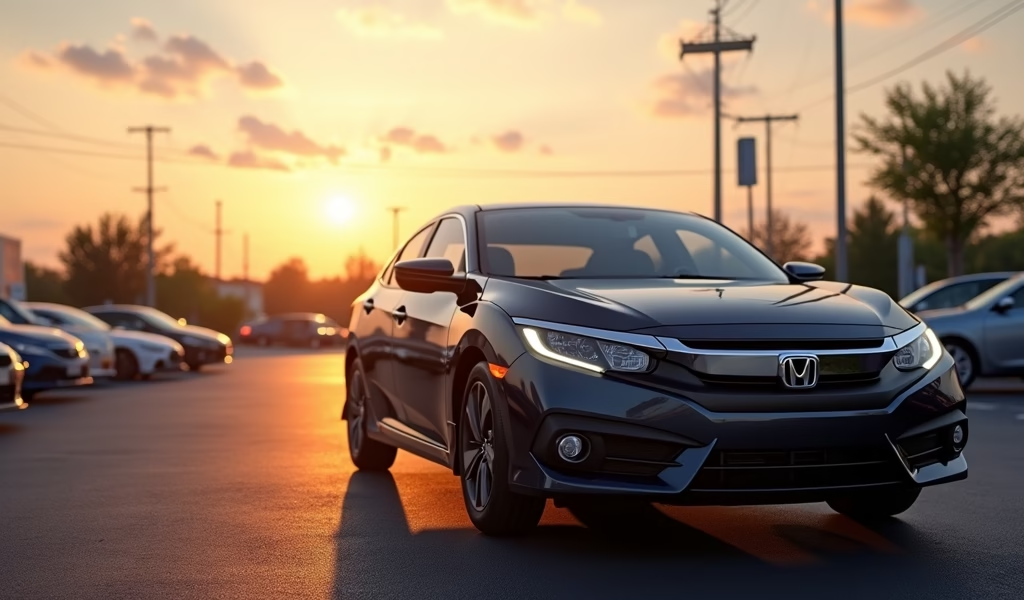Overview
This guide offers five expert strategies for finding quality used cars: researching vehicle history and value, setting realistic budgets that account for ongoing costs, conducting thorough inspections, exploring multiple shopping venues, and negotiating effectively with proper preparation. The article emphasizes that successful used car purchases result from methodical research and discipline rather than luck, potentially saving buyers thousands in unexpected repairs.
Table of Contents
- Finding Quality Used Cars: 5 Expert Tips for Smart Shoppers
- 1. Research Vehicle History and Value
- 2. Set a Realistic Budget
- 3. Conduct a Thorough Inspection
- 4. Explore Multiple Shopping Venues
- 5. Negotiate Effectively
- Conclusion
- Frequently Asked Questions
Finding Quality Used Cars: 5 Expert Tips for Smart Shoppers
Searching for used cars for sale can feel like trying to find a needle in a haystack – if the needle was wearing camouflage and the haystack was the size of Texas. With thousands of options available, finding the diamond in the rough requires strategy, patience, and a bit of mechanical know-how. In my 20+ years as an automotive technician, I’ve seen plenty of customers make costly mistakes that could have been avoided with proper guidance.
Today’s used car market is as hot as an engine that’s been running all day in the Arizona desert. Prices have skyrocketed faster than a sports car with a lead-footed teenager behind the wheel, making smart shopping more crucial than ever. I think that with the right approach, you can still find excellent value without emptying your savings account.
Why should you trust my advice? Well, I’ve personally inspected more vehicles than I can count, and I’ve witnessed firsthand how a seemingly perfect car can hide terrifying troubles beneath its polished exterior. My goal is to arm you with professional-grade knowledge so you can shop with confidence. Let’s dive into my top five tips for finding quality used cars for sale.
1. Research Vehicle History and Value

Knowledge is power when shopping for used cars, and vehicle history reports are your best allies in the battle against buying someone else’s problems. These reports act like time machines, giving you a peek into the car’s past life and potentially saving you from future heartache.
History Reports: Your First Line of Defense
When I’m helping friends or family buy used cars, I always insist on pulling comprehensive reports from these trusted sources:
- Carfax: The most well-known service, providing detailed accident history
- AutoCheck: Often better at tracking vehicle movements between auctions
- National Motor Vehicle Title Information System: A budget-friendly option backed by the federal government
These reports can reveal critical information that sellers might “forget” to mention, such as:
- Accident history (including severity and repair details)
- Previous flood or fire damage
- Odometer rollbacks or discrepancies
- Title problems (salvage, rebuilt, or lemon designations)
- Service records when available
- Previous use as a rental, taxi, or police vehicle
I recently helped a customer avoid a beautiful sedan that had been completely submerged during a hurricane – something the private seller conveniently omitted. The potential electrical nightmares that car would have caused would have been catastrophic to both safety and finances.
Determining Fair Market Value
Knowing what a vehicle is actually worth gives you tremendous leverage in negotiations. The car pricing world has three primary biblical texts:
- Kelley Blue Book (KBB): The venerable standard most people recognize
- Edmunds: Offers “True Market Value” with real-world pricing data
- NADA Guides: Often used by lenders and sometimes shows higher values
In my experience, checking all three gives you the most comprehensive picture. Market values can fluctuate dramatically based on:
- Local demand and inventory levels
- Seasonal factors (convertibles in summer, AWD vehicles in winter)
- Color (believe it or not, bland colors often hold value better)
- Options and trim levels
I always recommend cross-referencing values with actual listings in your area using sites like Consumer Reports’ used car buying guide. This real-world comparison helps you understand if the book values align with your local market.
2. Set a Realistic Budget
Creating a budget for used car shopping is like packing for a camping trip – if you forget something essential, you’ll be in for an uncomfortable surprise. Many first-time buyers focus exclusively on the purchase price, completely overlooking the continuing costs of ownership that can turn a good deal into a financial sinkhole.
Beyond the Purchase Price
When I counsel people on budgeting for a used car, I emphasize calculating the total cost of ownership, which includes:
- Initial purchase price and taxes
- Insurance premiums (which vary widely between models)
- Expected maintenance costs
- Projected fuel expenses
- Realistic repair reserves
That sports car might seem reasonably priced, but its premium fuel requirement, specialized maintenance needs, and insurance costs could double your monthly automotive expenses compared to a more practical sedan.
My rule of thumb? Set aside 20% of your purchase budget for first-year ownership costs beyond the purchase price. That might sound excessive, but in my three decades working on vehicles, I’ve rarely seen a used car transition to a new owner without needing at least some investment in maintenance or repairs.
Financing Considerations
If you’re financing your purchase, understanding how interest rates affect your total expenditure is crucial. Used car loans typically carry higher interest rates than new car loans – sometimes substantially higher.
Consider these financing tips:
- Get pre-approved before shopping to understand your true budget
- Compare rates from multiple lenders (banks, credit unions, online lenders)
- Consider the total interest paid over the life of the loan
- Beware of extended loan terms that reduce monthly payments but increase total cost
I’ve seen too many buyers focus on monthly payment instead of total cost, ending up underwater on loans for cars that have depreciated faster than they could build equity. This tragic financial predicament is more common than you might think, but completely avoidable with proper planning.
3. Conduct a Thorough Inspection
As a mechanic with decades under my belt, I can tell you with absolute certainty that appearances can be deceptively perfect in the used car world. That pristine exterior might be hiding mechanical gremlins that will have you on a first-name basis with your local tow truck driver faster than you can say “buyer’s remorse.”
DIY Inspection Essentials
Even before involving a professional, there are telltale signs any buyer can spot. When inspecting a potential purchase, pay careful attention to:
- Body panel gaps and paint consistency (indicating possible accident repair)
- Tire wear patterns (revealing alignment or suspension issues)
- Fluid leaks or stains on the engine or ground
- Interior condition (excessive wear might indicate high mileage or rough use)
- Electronic features functionality (test EVERY button and switch)
I once saved a customer from buying what looked like a perfect family SUV after noticing subtle mismatched paint on two body panels. Further investigation revealed a major accident that had compromised the frame – a potential safety issue no family should face.
Professional Pre-Purchase Inspection
The fantastic deals I’ve observed over the years often cancel themselves out when the potential purchasers proudly decline professional inspections to “save money.” This penny-wise, pound-foolish decision has led to more automotive heartbreak than perhaps any other mistake.
A professional inspection typically costs $100-300 and includes:
- Comprehensive mechanical assessment
- Computerized diagnostic scanning
- Undercarriage examination on a lift
- Road test by an experienced technician
- Detailed report of findings and potential concerns
I consider this the best investment in the entire car-buying process. Even as a mechanic myself, I have my own potential purchases independently inspected. No single person can catch everything, and a fresh set of professional eyes might spot issues even I would miss.
If a seller refuses to allow an inspection, that’s a red flag waving so vigorously it might generate electricity. Serious sellers understand that inspections are standard practice for informed buyers. According to Edmunds’ pre-purchase inspection guide, this step alone can save buyers thousands in unexpected repair costs.
4. Explore Multiple Shopping Venues

The where of buying a used car can be just as important as the what. Each shopping venue comes with its own set of potential advantages and pitfalls. In my experience, limiting yourself to just one source dramatically reduces your chances of finding that perfect balance of quality and value.
Comparing Shopping Options
Let’s break down the primary venues for finding used cars for sale and examine what each brings to the table:
- Franchised Dealerships: Often feature certified pre-owned programs with warranties but at premium prices
- Independent Used Car Lots: Typically offer lower prices but may have limited accountability after purchase
- Private Sellers: Potentially the best values but come with virtually no consumer protections
- Online Marketplaces: Provide vast selection but may require long-distance purchasing
- Auctions: Can yield fantastic deals but usually offer no inspection opportunity and come with significant risk
I’ve seen terrific purchases come from all these sources, but I’ve also witnessed disasters from each. The key difference? The buyer’s approach, not the venue itself. A cautious, methodical buyer can find gems anywhere, while a hasty purchaser can get burned at even the most reputable dealership.
Leveraging Online Resources
The digital revolution has transformed used car shopping more thoroughly than perhaps any other retail sector. Today’s smartest buyers use a powerful combination of online tools:
- Aggregator sites that compile listings from multiple sources
- Price comparison tools that analyze market values
- Vehicle history report services integrated with listings
- Owner forums and reliability databases for specific models
These tremendous technical tools turbocharge your treasure hunt, helping you filter the fantastic from the flawed without endless physical visits. I regularly recommend setting up saved searches with email alerts on major platforms – this way, you’re notified immediately when your ideal vehicle hits the market.
Don’t forget to check manufacturer-specific enthusiast forums. These passionate communities often have “for sale” sections where well-maintained vehicles change hands between knowledgeable owners. In my personal experience, some of the best-maintained used cars come from enthusiasts who have documented every oil change and repair.
5. Negotiate Effectively
For many buyers, negotiation feels about as comfortable as performing dental work on themselves. However, effective negotiation can save you thousands on your purchase. The good news? With proper preparation, you can negotiate with confidence rather than anxiety.
Preparation: Your Negotiation Superpower
Walking into a negotiation armed with knowledge gives you power that makes car sellers sweat like a snowman in summer. Before discussing price, ensure you have:
- Market value data for the specific model, year, and condition
- Awareness of any issues discovered during inspection
- Financing already arranged (if applicable)
- Knowledge of how long the vehicle has been for sale
- A maximum price firmly established in your mind
I’ve watched too many buyers enter negotiations without these basics and subsequently pay thousands more than necessary. Your preparation turns the tables, putting you in control rather than at the mercy of a potentially slick salesperson.
Effective Negotiation Tactics
Based on my decades helping clients navigate negotiations, these strategies consistently yield the best results:
- Start with a reasonable offer based on research (lowballing can kill negotiations immediately)
- Reference specific condition issues or market comparisons to justify your offer
- Focus on the out-the-door price, not monthly payments
- Maintain a pleasant, professional demeanor throughout
- Be willing to walk away (your strongest negotiating position)
One particularly effective technique is the “higher authority” approach. By indicating you need to consult with someone else (spouse, parent, mechanic) before finalizing, you create a natural pause in negotiations that often results in improved offers.
My clients who follow these approaches consistently report savings of $500-2,500 compared to initial asking prices. Remember that negotiation isn’t about “winning” or getting the absolute lowest possible price; it’s about ensuring you pay a fair price for the specific vehicle you’re purchasing.
According to Federal Trade Commission guidelines, understanding your rights as a consumer can also strengthen your negotiating position, particularly when dealing with professional sellers.
Conclusion
Finding quality used cars requires detective work, patience, and a methodical approach, but the financial rewards make these efforts worthwhile. By thoroughly researching history and value, setting realistic budgets, conducting proper inspections, exploring multiple shopping venues, and negotiating effectively, you dramatically increase your chances of driving home in a reliable vehicle at a fair price.
In my decades as an automotive professional, I’ve seen these five strategies transform the car-buying experience for countless people. The common denominator among successful used car purchases isn’t luck – it’s preparation and discipline.
Remember that buying a used car is a significant financial decision that deserves appropriate time and attention. The hours you invest in research and inspection might save you thousands in unexpected repairs and countless headaches down the road. Your future self will thank you for the diligence you show today.
Have questions about a specific aspect of used car shopping? Feel free to leave them in the comments below, and I’ll do my best to provide guidance based on my experience. Happy hunting, and may your next used car be the reliable transportation you deserve!
Frequently Asked Questions
What’s the best age for a used car purchase?
Three-to-five-year-old vehicles typically offer the best balance of depreciation savings and remaining useful life. These cars have experienced their steepest depreciation while still offering modern features and reliability.
How many miles is too many for a used car?
Rather than a specific number, focus on the vehicle’s condition and maintenance history. A well-maintained 100,000-mile vehicle can be a better purchase than a neglected 50,000-mile one.
Should I buy from a private seller or dealership?
Private sellers typically offer lower prices but provide no warranties or guarantees. Dealerships generally charge more but may offer certified pre-owned options with warranties and have reputational incentives to resolve issues.
Is it worth paying extra for a certified pre-owned vehicle?
For many buyers, the premium for CPO vehicles provides valuable peace of mind through additional inspection and warranty coverage. The value depends on your risk tolerance and how long you plan to keep the vehicle.
What’s the most important document to check before buying?
The vehicle history report is your most crucial document, revealing accidents, title problems, and service history. Never purchase a used vehicle without reviewing this document thoroughly.

